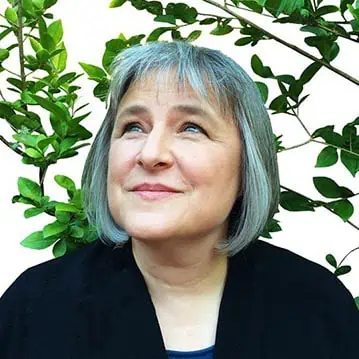Understanding Attachment: How the Micro-moments of our Lives Create Us
My mother was fractured by trauma. Her reflections of me shifted every time she blinked. Her inability to see and reflect my experience as a baby is an example of attachment trauma, sometimes called attachment injury or attachment disorder.
What is attachment?
Attachment is the way that our brains and bodies are wired to understand and predict relationship, which is heavily based on our childhood experience, especially in the first several years of life.
The way we are responded to creates within us this ongoing prediction or expectation of how we become attached to others, and whether that attachment is secure or insecure.
Do we get to expect that others will see us and know us? Or do we predict that others will be warm with us without knowing us? Do we expect that others will devour us? What do we expect from a relationship in which we’re getting close to someone else?
And, the other thing that’s happening is not just our prediction about what’s happening outside, but we’re learning how to take care of ourselves. We’re learning by modeling whether or not we get to be resonant mothers to our own emotions. When we have a sense from our care-givers that our emotions make sense, and when we are met with warmth, we slowly learn how to self-regulate by internalizing that regulation and warm attention from others.
How does childhood attachment experience predict our ability to self-regulate and have secure attachment?
The way that our parents manage their own emotions becomes the way that we manage ours. If our mom has an insulation layer between herself and her own emotions, we carry it with us. If our mothers believe that they are merged with us then we believe we are merged with our mothers.
If our mothers have moments of communion and connection and joy and shared emotional experience with us and moments where they are also themselves and they see us clearly as ourselves, then we’re getting the kind of rhythmic interaction that we need to know that we have a self and know that we’re with others.
We can look at this concept of attachment styles and the different ways that we internalize an idea about attachment by using the foundation of the brain and the palm of the hand.
If the wrist is the spinal column coming up to the base of the palm of the hand, the thumb being the wonderful limbic system. And then as we fold our fingers gently down over our thumbs, we’re representing the part of the brain, especially of the right hemisphere, that can send these neural connections and intentions of holding the self with warmth, with understanding.
How do we learn self-regulation?
How adverse childhood experiences lead to insecure attachment
What happens when our care-givers cannot reflect our experience? I’ll tell you a story about my own mother, and how being seen through a traumatized mother’s eyes fragments us.
I had the luck in college to receive four consecutive letters from her, each about the same subject: what she thought about me and friendship. In the first, she wrote, “Sarah, you have no friends.” In the second, she wrote, “You have so many friends.” In the third, “You are a person who only has one friend at a time.” And in the fourth, “I don’t understand how you can have so many close friends at once.”
Strange though it may seem, this particular series of letters was a relief to receive. After a lifetime of being unable to locate a central self within me, I had proof in black and white of the wildly fluctuating language that was used to describe me to myself. It was no wonder I was bewildered by my own character, personality, likes and dislikes, even by my own existence. These letters were a part of the trail of clues I followed to begin to understand my own fractured sense of being.
We are formed, moment by moment, by all the tiny interactions that we have with people.
The more significant the person is that we are in relationship with, the more we are formed by what action we take, what happens next, what is said, what is done, and how we are responded to.
Babies are born to be immensely social beings, to be in responsive relationship with the world around us, especially our primary care-giver. When our primary care-giver is fractured by their own trauma, they cannot reflect our experience. Children who are not reflected can often grow up not having a sense of being understood, of being seen, of making sense.
Without internalizing a lived experience from our caregivers that we make sense, we do not develop the fibers of attachment that help us self-sooth and regulate our nervous systems (though we can develop them later as adults!). Part of not being seen as children may lead to a sense that we are invisible, that we don’t know “who we really are.”
When the people in our world can’t really see us, and the tiny interactions that surround us don’t have much to do with who we are, we often find other ways to have relationships that let us exist.
We have relationships with land, with trees, with animals, and with some sense of the divine. (These alternatives to people can hold us very sweetly, but rarely do we have a sense that they are reflecting our experience with words.)
And words shape and form our brains. So without them, finding ourselves, and having a rounded, solid experience of existing, an experience of being known and predictable to our own selves, can be a bit tricky.
My experience of being seen with fractured eyes and memory may seem rare, but when we expand our understanding of the different ways that not being seen can happen, the experience becomes more common.
The lack of reflection can happen in a number of ways: it can be chaotic and kaleidoscopic, so that the words we receive about ourselves present something unrecognizable; it can be the echoing and bewildering emptiness of neglect; it can be the disruptive loss of existence and memory that occurs in physical, emotional, verbal and sexual abuse; or it can be the seeming presence of people who are focused only on what happens externally, people who take no joy in inner exploration and have very little autobiographical memory for self or other.







